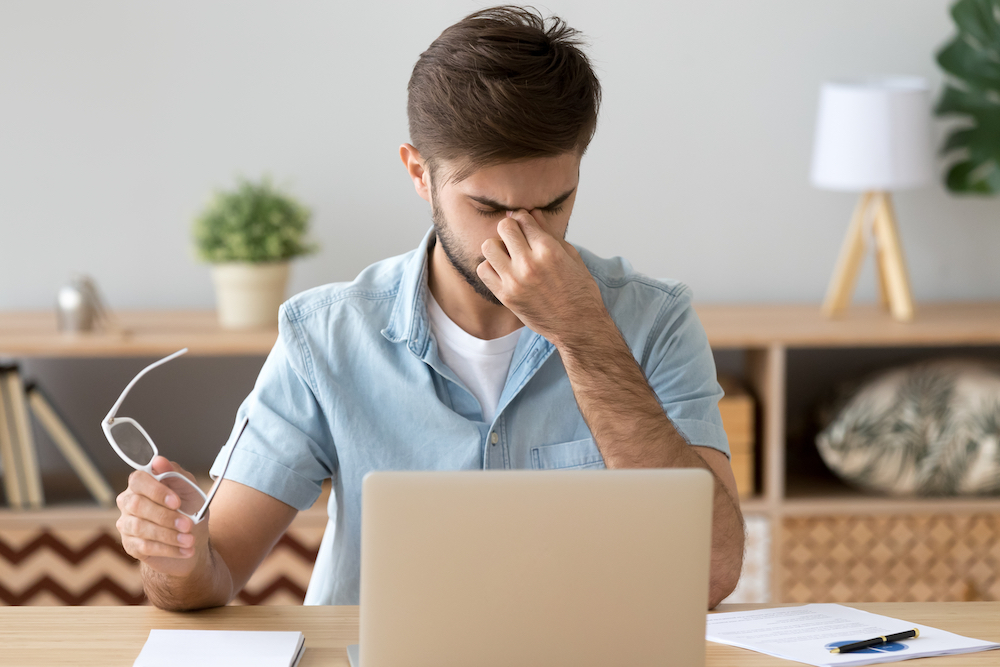Dry eye occurs when your eyes cannot produce enough tears to lubricate the surface of your eyes. Your eyes can dry up due to poor-quality tears or inadequate tear production. Inconsistent eye lubrication results in inflammation and damage to the surface of your eyes.
Causes of Dry Eye
Dry eyes result from various factors that affect the production of tears. Hormonal changes and autoimmune diseases can cause a dysfunction in your tear film. Allergic eye disease and inflamed eyelid glands can also affect your tear film.
Dry Eye Symptoms
Dry eye signs and symptoms include:
Sensitivity to light
Difficulty driving at night
Red eyes
Burning, scratchy, and a stinging sensation inside your eyes
Stringy mucus in your eyes
Stringy mucus around your eyes
Watery eyes
Blurry vision
Eye fatigue
Eye pain
Dry Eye Diagnosis
Your doctor will conduct the following tests and procedures for a diagnosis:
Comprehensive Eye Exam
Your doctor can conduct an eye exam that looks at your overall health and eye health history. Doing so helps them diagnose the root causes of your dry eyes.
Tear Volume Test
A Schirmer test measures the production of your tears. Blotting paper strips placed under your eyelids measure the moisture content in the eyes. Your doctor can also use the phenol red thread test to measure your tear volume. A pH-sensitive thread filled with a dye soaks tears under your eyelid. After 15 seconds, your doctor measures the tear volume using the wetted thread.
Tear Quality Test
Your doctor can use eye drops with special dyes to determine the condition of the surface of your eyes. Your doctor checks whether your cornea has any stain patterns. Measurement involves the length of time it takes before your tears can evaporate happens.
Tear Osmolarity Test
This test determines the composition of water and the particles in your tears. With dry eyes, you will have less water inside your eyes. Your eye doctor can also use a sample of your tears to check for markers that show you have dry eyes.
Complications
People with dry eyes can experience various symptoms. You are likely to develop eye infections because inadequate tears increase your risk. Your tears help protect your eye surface from becoming infected.
Severe dry eyes can cause inflammation, corneal surface abrasion, ulcers of the cornea, and vision loss. If left untreated, severe eye health damage can occur. Dry eyes can inhibit you from performing your daily activities.
Treatment
Dry eye treatment aims to restore or maintain the number of tears for lubricating your eyes. An optometrist can prescribe various treatments depending on the severity of the condition. Over-the-counter artificial tears help treat mild cases of dry eyes. This treatment supplements natural tears. If your dry eyes do not respond to the artificial tears, you may need to receive another type of treatment.
Your eye doctor can keep your natural tears in your eyes for a long time. Doing so is possible by blocking your tear ducts through where your tears drain. Your doctor can use plugs to close the tear ducts.
Your doctor can also prescribe using eye drops to increase your tear production. Your optometrist can also prescribe ointments, eye drops, lid massages, or warm compresses. The mentioned treatments help reduce inflammation around your eye’s surface.
For more about dry eye diagnosis, contact Korb & Associates at our office in Boston, Massachusetts. You can call us at (617) 322-0534 to book an appointment today.








